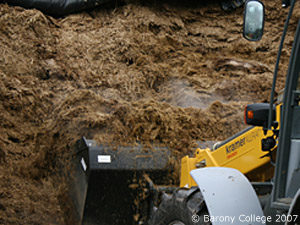Bacillus What?
15 February 2017Bacillus licheniformis
You may not have heard of it but this bacteria takes first prize as the most commonly diagnosed cause of abortion in Scottish cattle. SAC Veterinary Services data shows that during the last 10 years it has accounted for one third of all infectious abortion diagnoses. Bacillus licheniformis abortions are most common in housed, pit silage fed, spring calving beef cows in the last 2 months of pregnancy. It can also have a role in still births.
Bacillus licheniformis is present on all farms – in the environment, slurry, silage and water troughs. Taking the following steps can help to reduce cow exposure to it:
How to reduce exposure
- Feed the best available silage to late pregnant cows.
- Feed out the silage face in as short a time as possible. Don’t work left to right then right to left.
- Use a shear grab.
- Never feed silage that is obviously mouldy/slimy in appearance.
- Beware of silage from the top and sides of the pit – consider feeding it to youngstock.
- Clean away any uneaten silage before adding more.
- Clean out water troughs frequently – stir up the water and see how much debris is present on the bottom.
Testing has shown
- Big bales often contain lower numbers of Bacillus licheniformis than pit silage.
- A sample of slimy silage contained 36 million Bacillus licheniformis bacteria per gram.
- A sample of debris from the bottom of a water trough contained 5 million Bacillus licheniformis bacteria per gram.
Bacillus licheniformis abortions are much less of a problem in dairy herds. There may be a role for silage additives in reducing the risk but more work is needed to confirm this.
Heather Stevenson, heather.stevenson@sac.co.uk
Sign up to the FAS newsletter
Receive updates on news, events and publications from Scotland’s Farm Advisory Service

